The ultimate guide to shelters and wild camping in Denmark
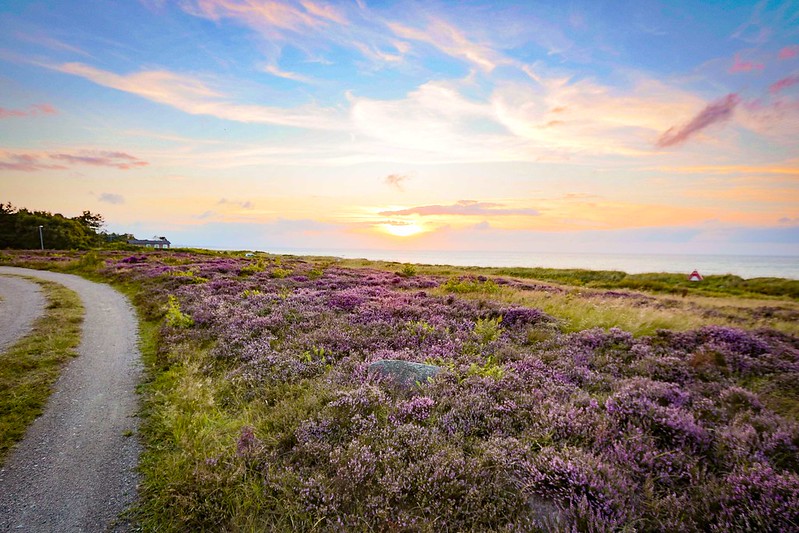
Sleeping under the stars, waking up to the fresh air, and no people around – the appeal of wild camping is easy to see.
Whether it’s your first time sleeping outdoors or you’re just looking for some inspiration, you can find tips here. In this post, I’ll share how you can go wild camping in Denmark, what to pack, rules, how to cook and much more, so you can plan a fantastic trip in the Danish wilderness.
Let’s dive in!
This post contains referral links for products I love. Adventurous Miriam earns a small commission at no extra cost to you if you purchase through my links. I appreciate your support ♡ Learn more
Introduction to wild camping in Denmark
Since the pandemic, spending time outdoors has become more popular. More people go hiking, visit the national parks and other nature attractions. So, it’s only natural that wild camping has gained popularity.
Wild camping is spending the night in nature outside of organised campsites and caravan parks. It could be pitching your tent in the forest during a hike, stringing your hammock up in your local woods, or a weekend in a shelter.
Before you go wild camping, the first thing you should do is find out where you want to go. Next, figure out how long you’ll be going and then you can pack accordingly.
But wait – Is wild camping even allowed in Denmark?
With restrictions, yes. In Denmark, it’s not allowed to camp anywhere you want.
However, there are designated camps and areas where you can spend the night under a tarpaulin, in a hammock, a tent, on the ground or in a shelter. I’ll get into that in a moment.
Is wild camping dangerous?
In Denmark? No.
We have no dangerous animals, except for ticks. You need to check yourself regularly for ticks!
This is the most common tick remover in Denmark (I don’t recommend a tweezer). We always bring one with us when we venture out in the summer.

Where to go wild camping in Denmark
The Danish Nature Agency allows four ways of spending the night outdoors: On the forest ground, in a small campsite, a large campsite and free tenting.
One of the most popular ways to camp in Denmark is in shelter. You can find shelters in most small and large campsites.
A shelter is a wooden open house with a roof and three closed sides where you can stay sheltered from rain and wind. Shelters in Denmark can be small with room for 6-8 people or large where up to 30 people can sleep. You can also find smaller shelters set together with a campfire site in the middle.
The forest
On the ground: You can sleep in any public forest on the ground under a tarpaulin or in a hammock as long as it’s not a tent.
Small campsites: For solo travelers and families. Most small campsites have shelters or lean-to, and you can also put up your own tent. Some have water and primitive toilets. There are around 300 spread across Denmark: Udinaturen.dk.
Large campsites: For larger groups of 15+. Larger campsites must be pre-booked. There are around 160 spread across Denmark.
With tent: You can put up your tent in more than 278 state forests for one night (read all the rules here)
The beach
You can spend the night at the beach in your sleeping bag (campers and tents are not allowed). Just be aware of the tide.
Roadside lay-by
If you travel by caravan or RV, you can pull into a roadside lay-by (in Danish: rasteplads). You can sleep inside your camper (not in a tent), unless it’s stated on a sign.

Rules for wild camping
These are the rules for wild camping in Denmark (source: The Danish Nature Agency). If you plan to set up your tent for the night, these rules apply.
- Overnight stay is free.
- Only spend one night in the same spot. You can spend two nights in small campsites.
- Only pitch one or two tents at a time and maximum three-person tents.
- Don’t pitch a tent near a road or building.
- Cars are only permitted if it’s signposted or if you have a permit.
- Campfires are only permitted in designated areas. Bring your own firewood.
- Take your litter with you.
- You can collect wild plants, berries and fruits.
- When nature calls, be at an acceptable distance from the campsite and leave no trace.
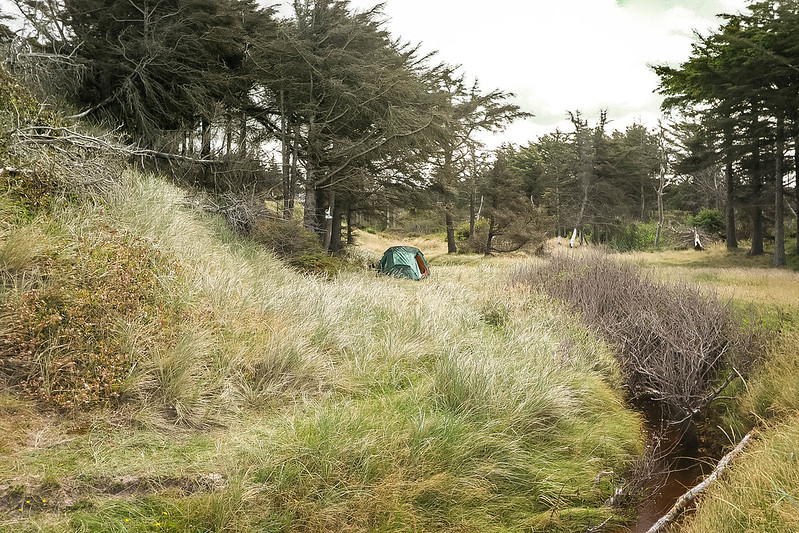
Best shelters in Denmark
There are no less than 2,000 shelters spread across Denmark. Most of them are basic and free, but some of them are privately owned, located in a unique spot or more luxurious. Here are a few of the best ones:
- Skåret shelter on Ærø. Just by the beach with a beautiful view.
- Havhytten at Hvide Klint near Roskilde. A floating shelter, perfect for kayakers.
- Rørvig shelter in Northern Zealand. Probably the prettiest shelter in the country.
- Skovteltet Birkelyst in Northern Jutland. A unique tent with transparent tent cloth, placed 1.5 m above the ground. This is privately owned and costs a nightly fee.
Book a shelter
While most of the Danish shelters are open, you may need to book in advance on the popular ones. Especially if you’re traveling with kids. You can book via the Danish Nature Agency website (in Danish). Book en shelter is for shelters on Funen and Falster, while you can book in Vejle here (in Danish).
Wild camping packing list
When you pack, remember you’ll be carrying your wild camping kit, so it all needs to be light and packable. There’s a whole bunch you can bring on your wild camping trip, but these are the essentials. For a full list, read my wild camping packing list.
Backpack
Whether you’ll be away for one or several nights, you need a spacious backpack with room for all your gear. A waterproof bag for electronics or clothes that shouldn’t get damp is also good to bring.
Sleeping
A good sleeping bag, a sleeping pad and a pillow are three indispensable things to bring on your shelter trip. Nights get cold in Denmark so make sure the sleeping bag is warm enough.
Food and drinks
You might not have a supermarket nearby, so you’ll need to bring food and water. More on that below.
Clothing
Check the weather before you leave home, but make sure to pack for all kind of weather (it’s Denmark, after all). Dressing in layers is the best way to go.
Gear
You could bring a bunch of useful items, but a lighter, pocket knife, flashlight (unless your phone has one), toiletries, a toilet showel and toilet paper, a first aid kit and a string clothesline are the most important. I also recommend bringing a power bank so you can charge your phone.
Cooking
If you’re staying at a campsite, you’ll probably have a bonfire available. When you plan your meals, pack camping foods that require no refrigeration. You can also make some of the meals ahead, like muffins, buns and banana bread. These are some ideas for wild camping meals:
- Breakfast: Oatmeal, fruits, bread, pancakes (with no eggs or milk)
- Lunch: Sandwich, canned meat and fish, peanut butter
- Hygge snacks: Marshmallows, popcorn, crackers, chocolate
- High energy snacks: Nuts, bananas, dried fruits and energy bars take up little space and are great when you’re in need of a boost.
- Dinner: (Whole-grain) pasta, rice, quinoa, risotto, beans, potatoes, fresh vegetables
Dehydrated foods are a lifesaver. They’re packed full of calories, lightweight and some of them don’t even taste half bad either. Make sure to bring firewood, water, pot/pan, utensils, plates and cups.
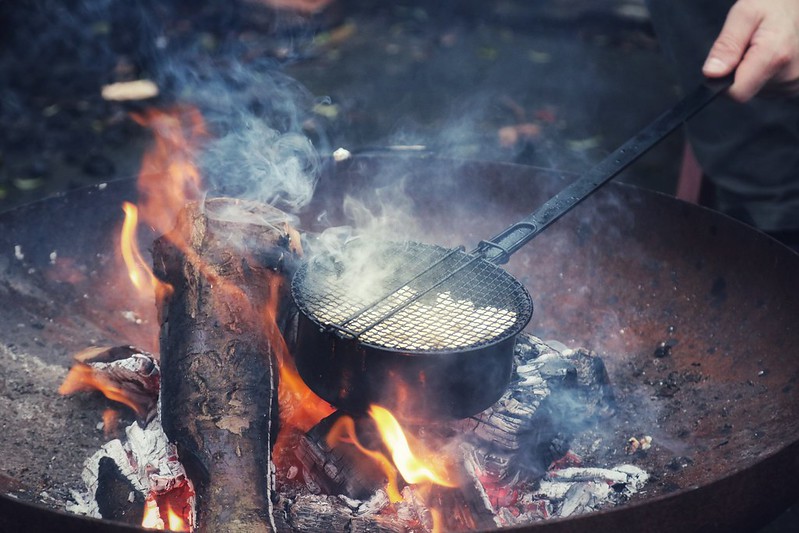
Toilets
Most small and big campsites have a toilet and shower nearby. But if not, this is what to do:
When nature calls, find a spot 50 metres away from the campground and streams/rivers. Dig a hole and cover with earth when finished. Put toilet paper in a trash bag and take it with you.
Useful Danish words
Informations of the camp sites are unfortunately only available in Danish, but here are a few useful Danish words:
- Bålhus = fire site with roofed construction e.g. pavilion, shelter
- Bålplads = campfire site
- Shelter = shelter or lean-to
- Drikkevand = drinking water
- Tilladt = permitted
- Forbudt = forbidden
- Telt = tent
- Overnatning = over night stay
- Stor lejrplads = big campsite
- Lille lejrplads = small campsite
- Faciliteter = facilities

Ask me anything about wild camping in Denmark below!
More stuff you’ll love:
- Camping meals: 45 camping food ideas (no refrigeration)
- Camping: Camping in Denmark for beginners
- Road trip: Denmark Road Trip: 7 amazing self-drive itineraries
- Nature: 12 mind-blowing places for nature in Denmark
- Beaches: 12 best beaches in Denmark
- UNESCO sites: Experience the 7 UNESCO sites in Denmark
- Car rental: How to rent a car in Denmark
- Danish food: 20 amazing dishes you must try in Denmark
- Christmas food: 10 Amazing Danish Christmas Foods You Have to Try
- Bornholm attractions: 12 amazing reasons to visit Bornholm island




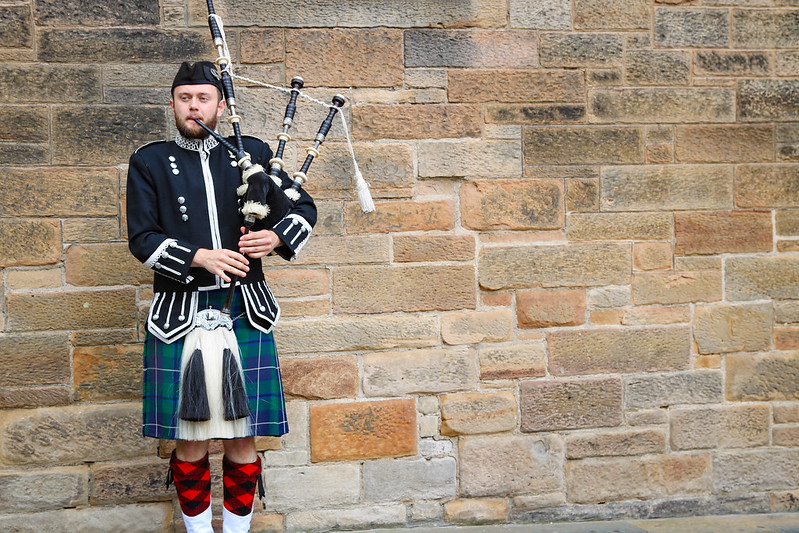
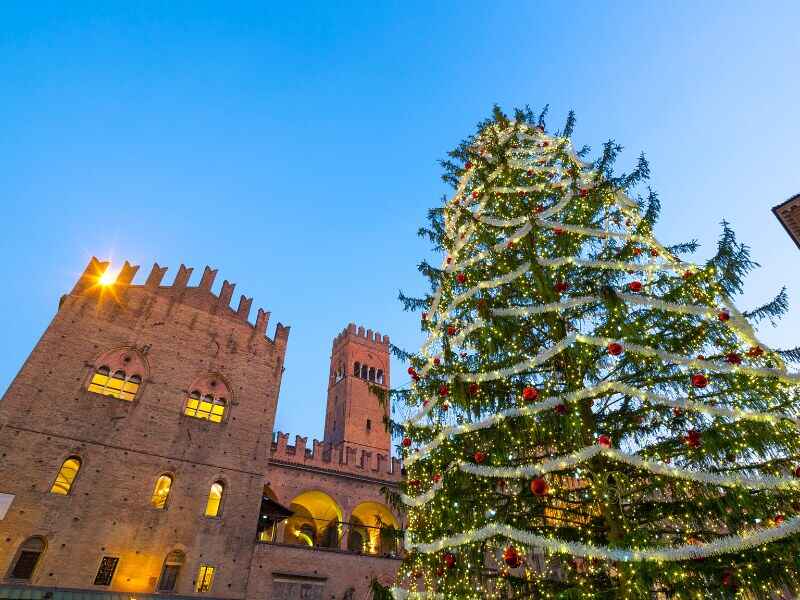
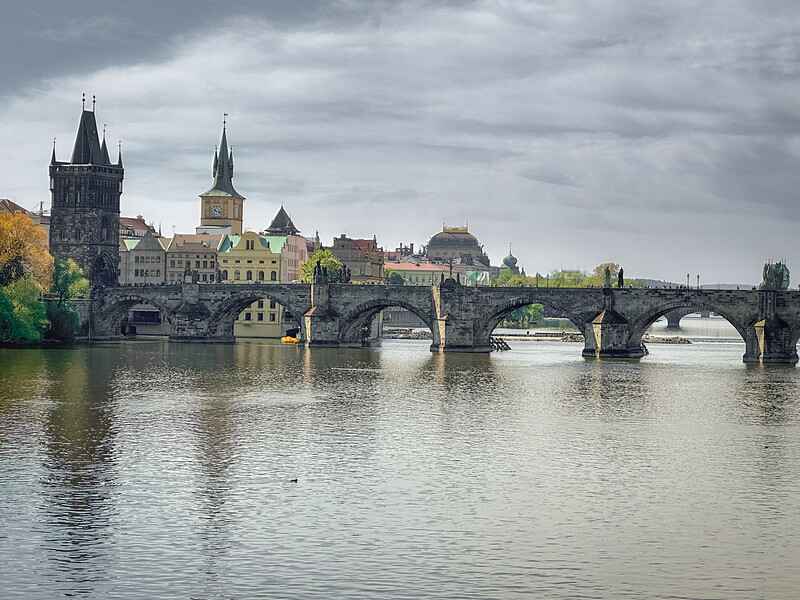
HI Miriam,
Thanks a lot for the good info 🙂
We have a rooftop tent and we are wondering if you have any nice places in Sjælland where we can use it. We have tried to go close to the shelters but normally you can get that close with a car.
Any help is much appreciated!
Hi Jonathan,
Unfortunately, rooftop tents aren’t allowed on primitive camping grounds. However, it’s now legal to stay on a private ground (e.g. private forrest) if you get permission from the owner. Another option is staying at a roadside lay-by or getting a regular tent.
Hi Miriam,
Thank you for all the information! I’ll be cycling from Sweden through Denmark and to Germany this summer. You provided lots of camping information. Just the info I was looking for.
Many thanks!
Friso
So grateful for this article, thank you! I’m very excited to discover Denmark in the summer backpacking with my small tent.
Hi Miriam
Great stuff, your guide for Denmark!
I was wondering if you could give me some advice about driving and cycling in your country.
I plan to select a few places in Denmark and use them as a starting point for 2, 3 or 4 day long bike & (mostly “wild”) camping trips.
My question is: is it safe in general to leave your car for a few days? I would of course never leave the car in places where it should’nt be in the first place and I certainly don’t intend to leave it in the centre of busy towns.
What would be my best option in your opinion? And maybe you have a few suggestions?
Sincere greetings!
Bob.